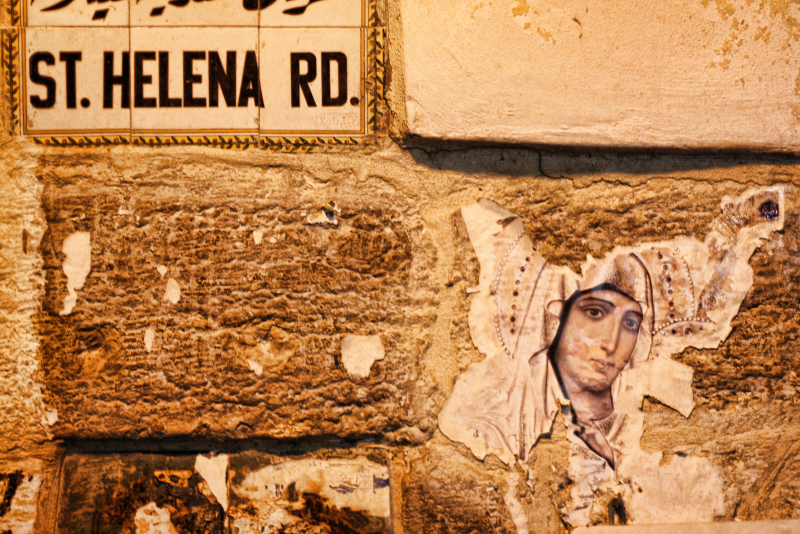Image of Saint Helena on the walls near the sign of the St. Helena road at the Old city of Jerusalem, on the way to the Mosque of Omar and the Church of the Holy Sepulchre.
Empress Helena Augusta of Constantinople is considered by the Eastern Orthodox, Oriental Orthodox and Roman Catholic churches as a saint, famed for her piety. Her feast day as a saint of the Orthodox Christian Church is celebrated with her son on 21 May, the “Feast of the Holy Great Sovereigns Constantine and Helen, Equal to the Apostles.
Constantine appointed his mother Helen as Augusta, and gave her unlimited access to the imperial treasury in order to locate the relics of Judeo-Christian tradition. In 325, Helena was in charge of such a journey to Jerusalem by her son. Upon the request of the monks in the region, Helena ordered the construction of a church in Egypt to identify the Burning Bush of Sinai. The chapel at St. Catherine’s Monastery–often referred to as the Chapel of Saint Helen–is dated to the year AD 330.
Jerusalem was still rebuilding from the destruction of Emperor Hadrian, who had built a temple to Venus over the site of Jesus’s tomb near Calvary. According to tradition, Helena ordered the temple torn down and chose a site to begin excavating, which led to the recovery of three different crosses. Then, refusing to be swayed by anything but solid proof, the empress had a woman who was already at the point of death brought from Jerusalem. When the woman touched the first and second crosses, her condition did not change, but when she touched the third and final cross she suddenly recovered[citation needed], and Helena declared the cross with which the woman had been touched to be the True Cross. On the site of discovery, Constantine built the Church of the Holy Sepulchre as well as on other sites detected by Helena.
(Source: Wikipedia in English)








